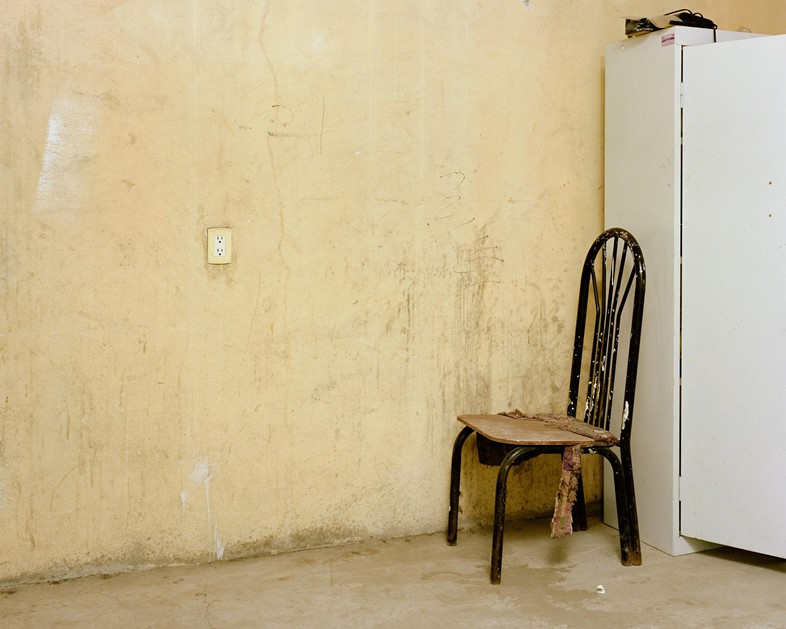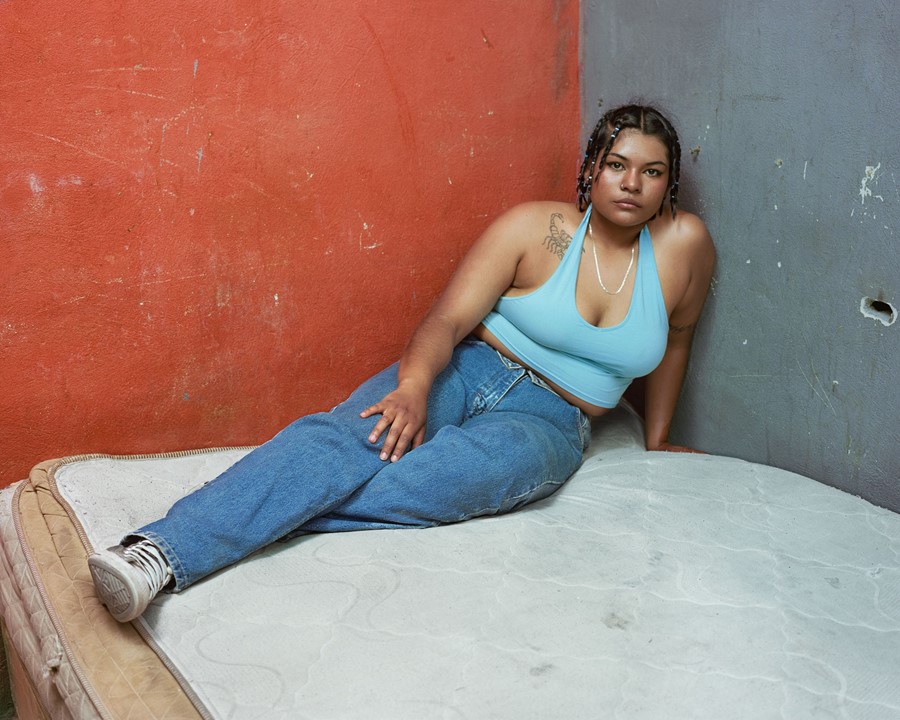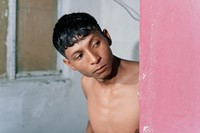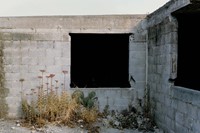Felipe Romero Beltrán spent the last four years photographing people he met along the Rio Bravo. A world away from media portrayals of migrants, the result is a series of psychologically charged portraits
The winding Rio Bravo, which flows 1,900 miles from Colorado to the Gulf of Mexico, is a lifeline for 16 million people in the desert. But it’s also a dangerous natural borderline – a silent actor shaping the lives of those who interact with it. Felipe Romero Beltrán has spent the past four years photographing the friends he has met along a short stretch of the river’s border around Monterrey, who have migrated across the continent, often with the hope of crossing into America.
Some are still waiting for their moment to cross, while others have decided to settle in Mexico after a failed attempt. “Sometimes they were the children of fathers that had tried to cross, so they are not even involved in the migration situation right now,” says Beltrán. Since early 2021, he has travelled back and forth from Paris, where he lives and works, to Monterrey, the largest town along the river’s border, to photograph the men and women coming of age in a place of limbo.
His new book Bravo compiles staged portraits with images of psychologically-charged spaces: scarred landscapes and stark interiors. The austere, pastel-coloured rooms he photographs are often devoid of decoration and lack permanence, but the stained mattresses and walls are marked by too much use. They tell the tale of life at the border where hope and dejection, stagnation and movement battle it out. “It has a special condition because we normally think of borders as lines that divide a territory. But being at the river, you can see and feel that it is a transitional territory,” he says. “More than a limbo state for me, it’s a waiting place, in a way that is never going to change.”

What Monterrey has become, however, is a vibrant melting pot of different cultures, food, music and foreign accents that make a lot of different people feel at home. Beltrán remembers walking in one day and finding a room full of speakers blasting Colombian music. “They were listening to this music that is actually really specific from certain parts of Colombia. And then you see that it resonates thousands and thousands of kilometres away.”
Unlike media portrayals of migrant caravans that show masses of unidentified people travelling towards the border, Beltrán’s images humanise those making the journey. “I spend quite a lot of time with people without taking photographs, trying to build certain connections,” he says. “Sometimes photography is not important at all but it gives me a passport to get to the people and the environment that I’m questioning.”
Over the years, he has repeatedly returned to his subject’s homes to take photographs, capturing one young boy called Rubén – who was born and raised in Monterrey and whose father had attempted the crossing – changing physically over time. “When I met him in 2021, he was like 14 or 15 years old. And now, of course, he’s more mature and completely different.” The others in the book are not far from his own age, which he thinks makes it easier for him to connect with them.

As a migrant himself, he also understands the reality of living in a country that is not your native one. Beltrán was born in Colombia, and moved to Argentina for university in 2009; then Palestine, Germany and Spain for work; before he settled in Paris. “Identity has always been a question for myself and also these realities of paperwork,” he says. “Even in Mexico, you see discrimination about identity and nationality.”
He uses a Mamiya medium format film camera with flashes to create the meticulously staged portraits and still lifes that channel an intimacy he carefully creates. Inspired by the Baroque paintings that have a strong connection with the body and light; and the films of the Italian director Pier Paolo Pasolini, who would often film non-professionals with long takes, Beltrán captures his friends: their tattooed torsos on show; stoic faces; with light in their eyes. Grecia, who has family in both the States and Monterrey, lies her head on a red table, her dark hair flowing around her face.
The river is present in very few of his images but Beltrán was interested in the ways in which the hostile border is breached by civilians who live on it. In a video, El Cruce, that accompanies his new show at Kbr Barcelona, he hones in on the people using the hostile river for purposes other than crossing. He films baptisms in the middle of the river that take place every Sunday: the migrants dunked into the river by the pastor trespassing the border felt to Beltrán like a political statement.

“He’s baptising people that are meant to cross to the other side, to give them a blessing, to wish them success on their path. And also, metaphorically speaking, it’s quite interesting how this act of burying someone under the water and then taking them out is a change of identity. There’s this action of transposing a borderline.”
He captures a fishing contest between people from the States and Mexico on the river; Luis, a Mexican man who lives on the borderline and crosses it illegally to get the wet clothes which the migrants abandon, which he then resells on the second-hand market; and Guadalupe, who was born and raised on the river, who swims every day with no intention of crossing. Beltrán’s is a portrait of young people dealing with the hand they have been dealt, making the most of their lives in the interim between their old lives and the new ones they don’t yet know.
Bravo by Felipe Romero Beltrán is published by Loose Joints, and is out now.






